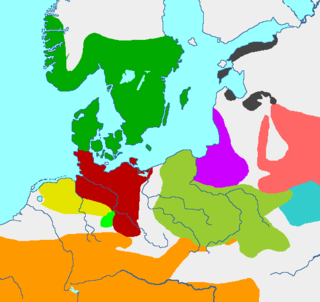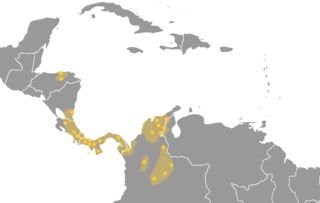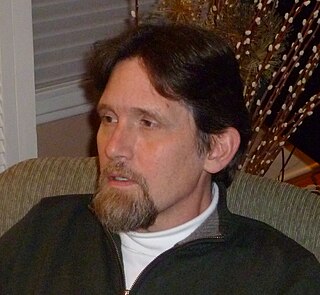Related Research Articles

Anthropology is the scientific study of humanity, concerned with human behavior, human biology, cultures, societies, and linguistics, in both the present and past, including past human species. Social anthropology studies patterns of behavior, while cultural anthropology studies cultural meaning, including norms and values. A portmanteau term sociocultural anthropology is commonly used today. Linguistic anthropology studies how language influences social life. Biological or physical anthropology studies the biological development of humans.

Cultural anthropology is a branch of anthropology focused on the study of cultural variation among humans. It is in contrast to social anthropology, which perceives cultural variation as a subset of a posited anthropological constant. The portmanteau term sociocultural anthropology includes both cultural and social anthropology traditions.
In social anthropology, matrilocal residence or matrilocality is the societal system in which a married couple resides with or near the wife's parents. Thus, the female offspring of a mother remain living in the mother's house, thereby forming large clan-families, typically consisting of three or four generations living in the same place.
The Human Relations Area Files, Inc. (HRAF), located in New Haven, Connecticut, US, is an international nonprofit membership organization with over 500 member institutions in more than 20 countries. A financially autonomous research agency based at Yale University since 1949, its mission is to promote understanding of cultural diversity and commonality in the past and present. To accomplish this mission, the Human Relations Area Files produces scholarly resources and infrastructure for research, teaching and learning, and supports and conducts original research on cross-cultural variation.
Cross-cultural studies, sometimes called holocultural studies or comparative studies, is a specialization in anthropology and sister sciences that uses field data from many societies to examine the scope of human behavior and test hypotheses about human behavior and culture.

The Pomeranian culture, also Pomeranian or Pomerelian Face Urn culture was an Iron Age culture with origins in parts of the area south of the Baltic Sea, from the 7th century BC to the 3rd century BC, which eventually covered most of today's Poland.
Raoul Naroll was a Canadian-born American anthropologist who did much to promote the methodology of cross-cultural studies.

The Intermediate Area is an archaeological geographical area of the Americas that was defined in its clearest form by Gordon R. Willey in his 1971 book An Introduction to American Archaeology, Vol. 2: South America. It comprises the geographical region between Mesoamerica to the north and the Central Andes to the south, including portions of Honduras and Nicaragua and most of the territory of the republics of Costa Rica, Panama and Colombia. As an archaeological concept, the Intermediate Area has always been somewhat poorly defined.
In social anthropology, patrilocal residence or patrilocality, also known as virilocal residence or virilocality, are terms referring to the social system in which a married couple resides with or near the husband's parents. The concept of location may extend to a larger area such as a village, town or clan territory. The practice has been found in around 70 percent of the world's modern human cultures that have been described ethnographically. Archaeological evidence for patrilocality has also been found among Neanderthal remains in Spain and for ancient hominids in Africa.
William Tulio Divale was a professor of anthropology at York College, City University of New York in Jamaica, New York, USA. He died in 2020 at the age of 78.
The Standard Cross-Cultural Sample (SCCS) is a sample of 186 cultures used by scholars engaged in cross-cultural studies.
The Department of Social Relations for Interdisciplinary Social Science Studies, more commonly known as the "Department of Social Relations", was an interdisciplinary collaboration among three of the social science departments at Harvard University beginning in 1946. Originally, the program was headquartered in Emerson Hall at Harvard before moving to William James Hall in 1965. While the name "Social Relations" is often associated with the program's long-time chair and guiding spirit, sociologist Talcott Parsons, many major figures of mid-20th-century social science also numbered among the program's faculty, including psychologists Gordon Allport, Jerome Bruner, Roger Brown, and Henry Murray (personality); anthropologists Clyde and Florence Kluckhohn, John and Beatrice Whiting, Evon Z. Vogt ; and sociologist Alex Inkeles. Other prominent scholars, such as Jerome Kagan and Ezra Vogel belonged to the department early in their careers before it split. Many of the department's graduate students also went on to be major figures in US social sciences during the latter part of the twentieth century; their work tends towards strong interdisciplinary and cross-disciplinary approaches.
Brahmagiri is an archaeological site located in the Chitradurga district of the state of Karnataka, India. Legend has it that this is the site where sage Gautama Maharishi and his wife Ahalya lived. He was one among seven noted Hindu saints. This site was first explored by Benjamin L. Rice in 1891, who discovered rock edicts of Emperor Ashoka here. These rock edicts indicated that the locality was termed as Isila and denoted the southernmost extent of the Mauryan empire. The Brahmagiri site is a granite outcrop elevated about 180 m. above the surrounding plains and measures around 500 m east-west and 100 m north-south. It is well known for the large number of megalithic monuments that have been found here. The earliest settlement found here has been dated to at least the 2nd millennium BC.
Hallur is an archaeological site located in the Haveri district, in the Indian state of Karnataka. Hallur, South India's earliest Iron Age site, lies in a semi-arid region with scrub vegetation, located on the banks of the river Tungabhadra. The site is a small mound about 6.4 m high. The site was first discovered by Nagaraja Rao in 1962, and excavated in 1965. Further sampling was carried out in the late 1990s for the recovery of archaeobotanical evidence and new high precision radiocarbon dates
Cliodynamics is a transdisciplinary area of research that integrates cultural evolution, economic history/cliometrics, macrosociology, the mathematical modeling of historical processes during the longue durée, and the construction and analysis of historical databases.

Donald Powell Cole is a noted anthropologist at the American University in Cairo. He joined the university in 1971. He is a member of the American Anthropological Association. Cole has studied Arab nomadic cultures, such as the Al Murrah, in his The Social and Economic Structure of the Āl Murrah: A Saudi Arabian Bedouin Tribe, his PhD dissertation at the University of California, Berkeley.

Melvin Lawrence Ember was an American cultural anthropologist and cross-cultural researcher with wide-ranging interests who combined an active research career with writing for nonprofessionals.

Peter N. Peregrine is an American anthropologist, registered professional archaeologist, and academic. He is well known for his promotion of the use of science in anthropology, and for his popular textbook Anthropology. Peregrine did dissertation research on the evolution of the Mississippian culture of North America, and conducted fieldwork on Bronze Age cities in Syria. He is currently Professor of Anthropology and Museum Studies at Lawrence University and Research Associate of the Human Relations Area Files at Yale University. From 2012 to 2018 he was an External Professor at the Santa Fe Institute.
Computational social science is the academic sub-discipline concerned with computational approaches to the social sciences. This means that computers are used to model, simulate, and analyze social phenomena. Fields include computational economics, computational sociology, cliodynamics, culturomics, and the automated analysis of contents, in social and traditional media. It focuses on investigating social and behavioral relationships and interactions through social simulation, modeling, network analysis, and media analysis.
Byron Joseph Good is an American medical anthropologist primarily studying mental illness. He is currently on the faculty of Harvard University, where he is Professor of Medical Anthropology at Harvard Medical School and Professor of Cultural Anthropology in the Department of Anthropology.
References
- ↑ "Ember, Carol R." id.loc.gov. The Library of Congress. Retrieved 2017-10-15.
{{cite web}}: CS1 maint: others (link) - 1 2 3 4 "Human Relations Area Files". Yale University. Retrieved 28 April 2016.
- 1 2 "Carol Ember". Greatarchaeology.com. Retrieved 28 April 2016.
- 1 2 3 Ember & Ember 1977, p. Review.
- ↑ Ember, Peregrine & Hoppa 2006, p. review.